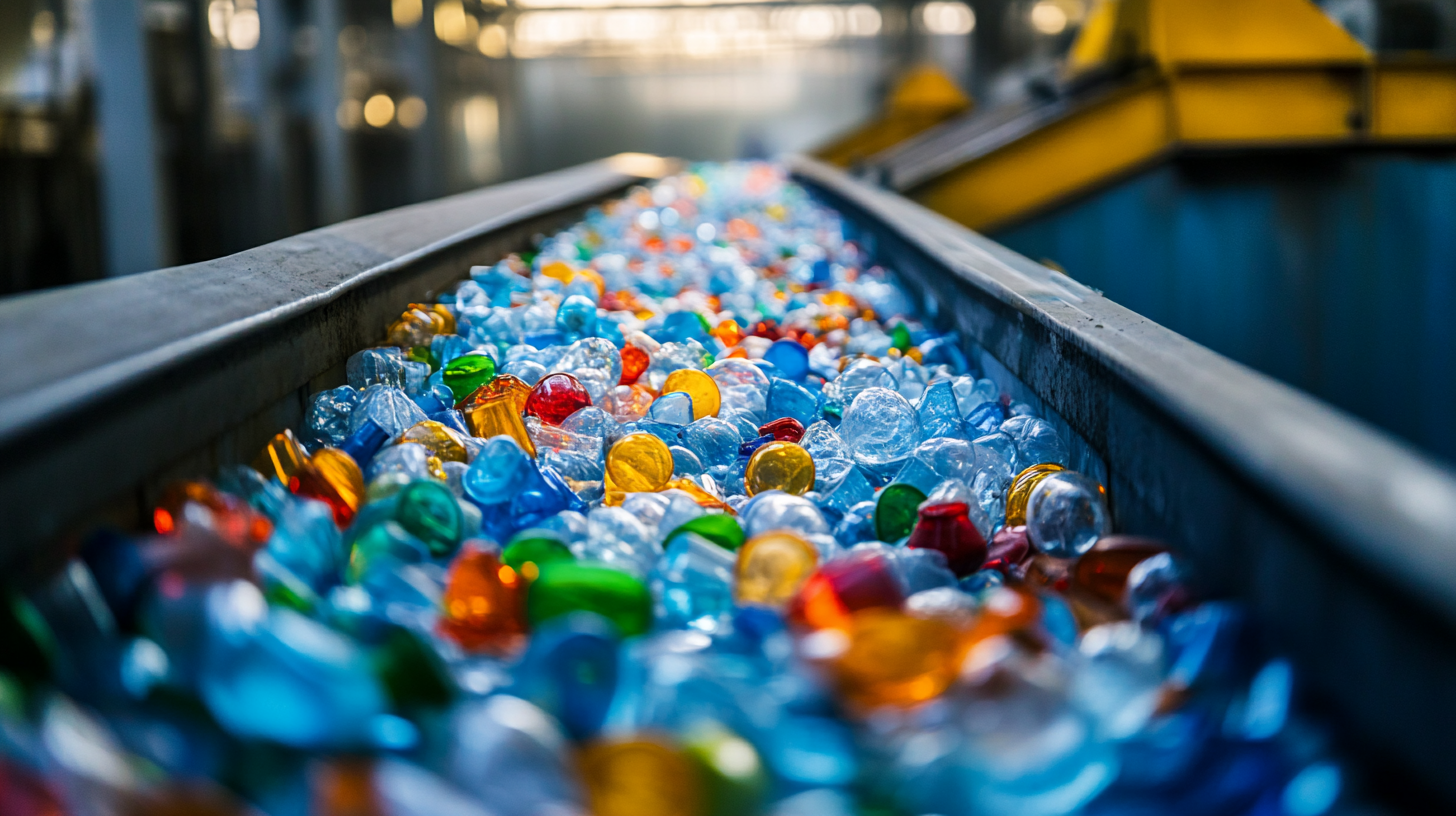Global Glass Loading Machine Market Insights for 2025 with Powerful Strategies for Buyers
In the rapidly evolving industrial landscape, the Glass Loading Machine market is poised for significant growth by 2025. As manufacturers and suppliers adapt to changing demands and technological advancements, understanding the market dynamics of Glass Loading Machines becomes essential for buyers looking to optimize their operations. This blog aims to provide valuable insights into the current trends, challenges, and opportunities within this sector, equipping stakeholders with the knowledge they need to make informed purchasing decisions.
Moreover, this exploration of the Glass Loading Machine market will highlight powerful strategies that buyers can leverage to enhance their procurement processes. By analyzing key market drivers and emerging technologies, we will reveal actionable insights that can lead to improved efficiency and productivity. Whether you're an established player in the glass industry or a newcomer seeking to invest in cutting-edge loading technology, this blog will serve as a comprehensive guide to navigating the complexities of the market and securing the best solutions for your operational needs.

Key Trends Driving the Global Glass Loading Machine Market in 2025
The global glass loading machine market is experiencing significant momentum as we approach 2025, driven by a myriad of trends that highlight the evolving demands of the industry. One of the foremost trends is the increasing automation across manufacturing processes. Businesses are investing in smart technologies to enhance efficiency, reduce labor costs, and streamline operations. As companies seek to maintain competitiveness, the demand for glass loading machines equipped with advanced features that facilitate automation is anticipated to rise sharply.
Moreover, sustainability is becoming a major consideration for manufacturers. With a growing emphasis on environmentally responsible practices, many producers are looking for glass loading machines that minimize waste and energy consumption. Innovations in machine design are allowing for more energy-efficient operations, which not only appeal to eco-conscious consumers but also align with industry regulations aimed at reducing environmental impact.
Additionally, the customization of glass loading solutions is on the rise. Manufacturers are increasingly requiring machines tailored to specific production needs and glass types. This trend signifies a shift towards flexibility in production systems, allowing for rapid changes in product lines without substantial downtime or costs. To meet these diverse requirements, suppliers are implementing modular designs that can be adjusted based on individual customer specifications.
As we look ahead to 2025, stakeholders in the glass loading machine market should remain attuned to these key trends. These developments present powerful strategies that can guide buyers in making informed decisions to optimize their operations and enhance productivity.

Emerging Technologies Transforming Glass Loading Processes
The glass loading machine market is transforming rapidly, driven by emerging technologies that enhance efficiency and precision in loading processes. As per a recent report by MarketsandMarkets, the global glass loading machine market is expected to grow from $1.04 billion in 2020 to $1.58 billion by 2025, showcasing a CAGR of 8.4%. This surge is largely attributed to the increasing demand for high-quality glass products in industries ranging from construction to automotive.
Innovative technologies such as automation and artificial intelligence are redefining glass loading processes. Automated systems enable faster handling and reduce the risk of damage, significantly improving overall operational efficiency. According to a report by Research and Markets, companies implementing these technologies have reported a 30% reduction in labor costs and up to a 50% decrease in loading time. Furthermore, AI-driven analytics can optimize loading patterns, ensuring maximum space utilization and minimizing waste.
In addition to automation, advancements in robotics are also playing a crucial role. Modern loading machines equipped with robotic arms and 3D vision systems provide a higher level of dexterity and precision, essential for handling fragile glass materials. The International Robotics Federation indicates that the use of robotics in the glass industry could enhance performance metrics by enhancing system flexibility and scalability, accommodating diverse product sizes and shapes with minimal downtime.
As these technologies continue to evolve, buyers in the glass loading machine market must stay informed about the latest innovations to make strategic purchasing decisions that align with their operational goals. With the right technological integration, companies can expect not only improved efficiency but also a significant competitive edge in the growing market.

Strategic Buyer Approaches for Maximizing Value in Glass Loading Machines
In the competitive landscape of the global glass loading machine market, strategic buyer approaches have become essential for maximizing value and ensuring a favorable return on investment. As projected by industry reports, the market is expected to grow at a CAGR of approximately 6.5% from 2023 to 2025, driven by advancements in automation technology and increasing demand for high-efficiency glass manufacturing processes. This growth presents a unique opportunity for buyers who are equipped with the right strategies.
One vital approach for buyers is to conduct a thorough assessment of the technological capabilities of various glass loading machines. High-quality models often incorporate features such as enhanced speed, precision, and the ability to handle a variety of glass types. According to a recent report by Smith & Co. Market Research, companies that invest in state-of-the-art machinery can improve their production efficiency by up to 30%, significantly reducing operational costs.
Another key strategy is to negotiate favorable terms by leveraging data analytics. With access to comprehensive market intelligence, buyers can identify pricing trends and benchmark costs against competitors. Research indicates that buyers who utilize data-driven negotiation tactics can save an average of 15-20% on their equipment purchases. Additionally, fostering strong relationships with manufacturers can lead to better after-sales support and access to exclusive upgrades or customization options.
Ultimately, to maximize value in their glass loading machine investments, buyers must embrace a proactive and informed approach that aligns with the latest industry insights and technological innovations. By focusing on quality, data-driven decisions, and strong partnerships, buyers can position themselves for success in an evolving market.

Regional Market Analysis: Opportunities and Challenges in Glass Loading Equipment
The global market for glass loading equipment is distinctly shaped by regional dynamics, creating a landscape of opportunities and challenges for buyers. As e-commerce continues to expand, logistics companies are increasingly automating their processes, which in turn drives the demand for efficient glass loading machines. According to recent industry analysis, the material handling equipment market is expected to exceed USD 7.2 billion by 2035, fueled by this automation surge. This trend highlights a significant opportunity for regional suppliers to innovate and meet the precise needs of logistics operations.
However, the diverse regional market conditions present challenges as well. Different geographical areas have varying regulations, technological advancements, and market maturity levels. For example, while North America may witness rapid growth in automated glass loading solutions, emerging markets in Asia-Pacific might face hurdles such as insufficient infrastructure and investment. Furthermore, the market for conveying equipment, which is closely tied to glass loading processes, is projected to grow at a CAGR of 3.9% from 2024 to 2030, indicating a robust demand that buyers must tap into.
Understanding these regional intricacies is crucial for stakeholders looking to navigate the glass loading equipment landscape effectively. Buyers should focus on building strategic partnerships and investing in technologies that align with geographic needs, thus ensuring they are well-positioned to leverage upcoming opportunities while mitigating inherent challenges within the industry.
Future Predictions: How Sustainability Will Shape the Glass Loading Machine Industry
The glass loading machine industry is on the brink of significant transformation as sustainability becomes a central theme for buyers and manufacturers alike. As environmental concerns rise, companies are increasingly integrating eco-friendly practices into their operations. This shift includes the development of machines that minimize energy consumption, utilize recyclable materials, and reduce waste throughout the glass loading process. By focusing on sustainability, businesses not only comply with regulations but also enhance their market appeal to a growing base of environmentally conscious consumers.
Future predictions suggest that the demand for sustainable glass loading machines will rise substantially by 2025. Companies are expected to invest in innovative technologies that not only improve efficiency but also lower the carbon footprint of their processes. These advancements may include automated systems that optimize loading operations, minimizing human intervention and maximizing productivity. Furthermore, strategic partnerships across the supply chain will likely emerge, aimed at promoting sustainable practices and sharing resources that bolster environmental responsibility.
As buyers prioritize sustainability, they will seek suppliers who can demonstrate a commitment to eco-friendly initiatives. This trend will foster a competitive landscape, incentivizing manufacturers to invest in research and development to create cutting-edge, sustainable solutions. Anticipating these shifts is crucial for stakeholders in the glass loading machine market, as those who embrace sustainability will not only meet market demands but also drive the industry toward a greener future.

Home
About Us
Products
UPVC PVC Window Machine
Aluminum Window Machine
Glass Cutting Machine
Glass Edging Machine
Insulating Glass Machine
Glass lifting machine
Glass Washing Machine
Glass Laminating Machine
Glass Sandblasting Machine
Glass Drilling Machine
CNC Glass Working Center
CNC Non-Metal Cutting Machine
The Other Glass Machinery
Application
Download
News
Contact Us




